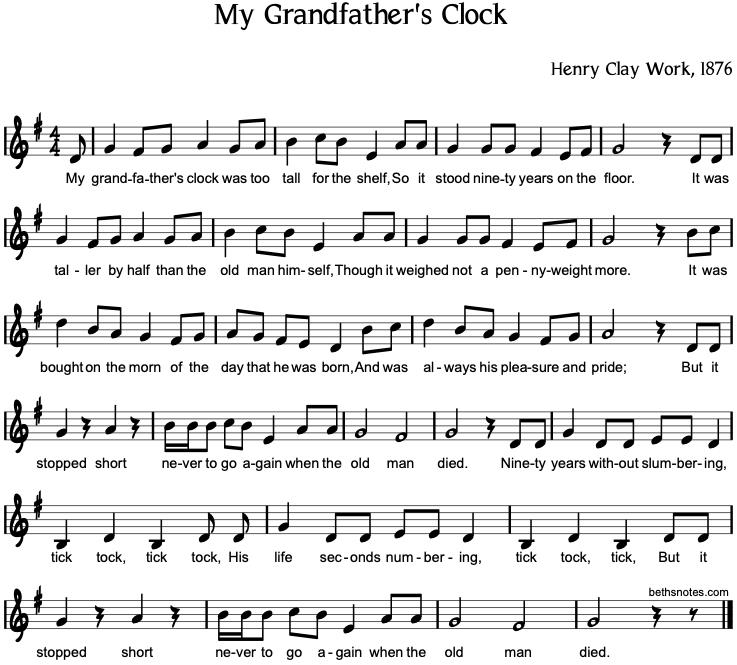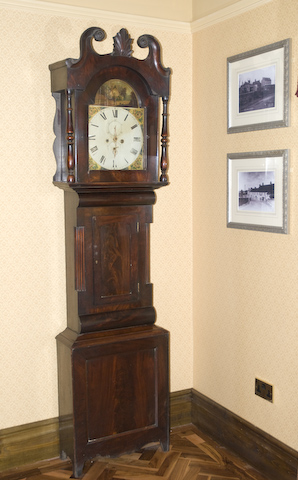Grandfather clock or longcase clock – which is it? Well, George Bernard Shaw famously described the British and the Americans as two nations divided by a common language. In the war of words, when it comes to clocks, grandfather clocks or longcase clocks, it seems the Americans are winning.
People who trawl the internet for those tall floor standing clocks which for centuries have graced the halls, dining rooms and parlours of great and humble houses alike, tend to search for ‘grandfather clocks’ rather than ‘longcase clocks’. Why?
The blame lies in the unlikely combination of an American self-taught songwriter of the Civil War, and a North Yorkshire pub.
Longcase clocks have been around since the invention of the long pendulum by Christiaan Huygens, a Dutch astronomer, in 1657. It revolutionised timekeeping because of its accuracy and it led to the move from wall-hanging clocks to free-standing clocks.
For 200 years, through their heyday, these beautiful clocks were rightly called longcase clocks. What could be better? A name that clearly describes what they are, and is broad enough to accommodate the whole range, from the ornately decorated intricate cases of some of the best London makers, to the more humble 30 hour pine or rough oak cottage clocks in the provinces. They were all happily longcase clocks – and proud of it.
Lobbying for the Grandfather clock
Time passes and the story moves on to 1874 when one Henry Clay Work, a self-taught musician and lyricist, checked in to the George Hotel in Piercebridge, North Yorkshire. By one of those odd coincidences of history, Work hailed from Connecticut, one of the clock-making centres of the US. Perhaps that is why he was struck by the elegant longcase clock which imposed itself in the lobby of the unassuming George Hotel.
The tale goes like this. The clock wasn’t working. It had stopped at 11.05 (although to people then and to traditionalist like me now, please read that as five past eleven). Being American, he asked why. The landlord explained. The clock had belonged to the previous owners of the inn, the Jenkins brothers. Apparently it had been bought on the day of the birth of the older of the brothers and had kept perfect time for decades. When the first sibling died, the clock faltered and slowed; at the very moment the second brother died it stopped, and had not moved forward a second since.
Call me old-fashioned, but this sounds unlikely. Prosaically, I think the more likely explanation is that the then owner didn’t want to spend the money to have the clock repaired (while we are stereotyping, I should point out that the inn is in Yorkshire) and he needed a good story for a weary and gullible overseas tourist.
Hit in the making
As chance would have it, this proved just too good an opportunity for an enterprising songwriter who was a little down on his luck. Some say he spent four years writing his best-remembered hit – My Grandfather’s Clock – which was published in 1876 and became an instant classic, selling around one million copies and netting its creator a colossal $4000. The name grandfather clock entered common parlance and stayed there.

(Note another anomaly in the story here – started in 1874, it took four years to write and was published in 1876. So often, when folklore meets history, time is fluid.)
So, so-called grandfather clocks came into existence two centuries after they were actually invented as longcase clocks. And almost 150 years later the name created by a balladeer still dominates on both sides of the Atlantic.
Except that, for some of us, the name grandfather clock still feels uncomfortable.
They deserve better
 As I look at the elegance of my daughter’s eight day longcase clock, made by the famous Thomas Mawkes of Derby, or as I wind my own simple 30 hour oak longcase clock by Yorkshire maker Neddey Wells of Shepley, the trite sentimentality of a Victorian era ballad doesn’t do either of them justice. They were both in existence a hundred years before Henry penned his ditty. They deserve better.
As I look at the elegance of my daughter’s eight day longcase clock, made by the famous Thomas Mawkes of Derby, or as I wind my own simple 30 hour oak longcase clock by Yorkshire maker Neddey Wells of Shepley, the trite sentimentality of a Victorian era ballad doesn’t do either of them justice. They were both in existence a hundred years before Henry penned his ditty. They deserve better.
You call them grandfather clocks if you like. I’m sticking to calling them longcase clocks, the name by which they were called when they were made, a century before Henry Clay Work’s stagecoach pulled up at the doors of the George Inn in Piercebridge and time changed forever.
With acknowledgement to bethnotes.com for the sheet music image and Mark Clark for the use of the grandfather clock image from his excellent Castles Made of Sand blog
And thanks to Sophie for supplying the picture of her gorgeous Thomas Mawkes eight day longcase clock.
